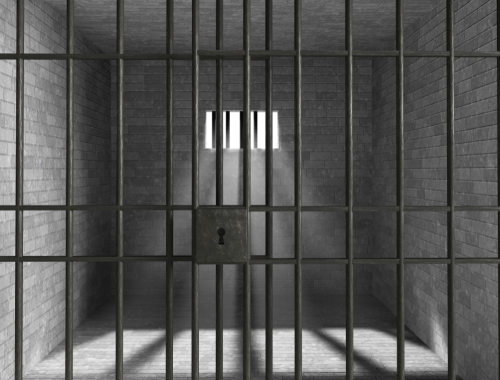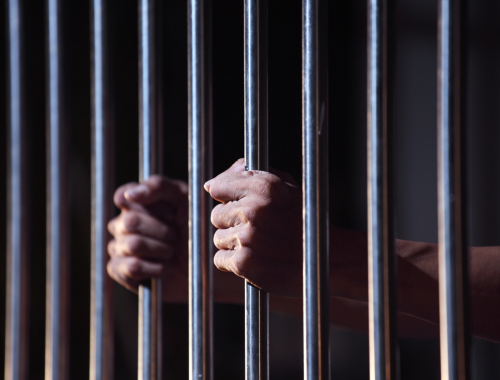Prisons are more likely to be called a jail because both are correctional facilities used to detain individuals who have been convicted or accused of crimes. Both the terms are often used interchangeably but their difference lies in the size of the facility and imprisonment term. While there are significant differences between the two correctional facilities, there is some overlap. In this article, we’ll talk about what they mean and the similarities between jail and prison.

What is a Jail?
Jails are typically smaller in scale and come under the jurisdiction of local law enforcement agencies or county governments. It’s a correctional facility in which individuals (criminals or suspects) are detained for a short time until their date of trial. Jail is like a temporary holding facility used to detain those awaiting trial or sentencing, or someone who’s been recently arrested for the crime he/she is accused of. Jails are basically used to hold those serving a sentence of one year or less.
Jail is an institution that falls somewhere between a lockup and a prison in terms of incarceration. It’s a place of confinement, especially for lawbreakers and criminals. Jails may have different holding areas for different categories of detainees, such as men, women, and juveniles.

What is a Prison?
Prison is a detention center that is used to hold or detain convicted criminals for a relatively longer period of time. It’s a correctional facility that is more likely to be called a jail but not necessarily, and is designed to incarcerate those who have been convicted of serious crimes, such as murder, kidnapping, manslaughter, domestic violence, rape, aggravated assault, etc.
Prisons typically fall under the jurisdiction of state or federal governments, and are designed for criminals serving a long-term sentence that extends beyond a year. They are bigger facilities in terms of holding capacity and security. There are maximum security prisons that hold the very worst offenders or the most dangerous criminals who are serving longer sentences or maximum life sentences.
Similarities between Jail and Prison
Correctional Facility
– Both are correctional facilities that are designed to hold persons who are accused or convicted of crimes. Both are places of confinement that keep the society safe by keeping serious criminals and offenders off the streets and behind bars.
Legal Rights
– Detainees and inmates both have legal rights in both jails and prisons. These rights include right to food and water, protection from torture, right to have an attorney appointed, and more. Prisoners shall be treated as human beings and shouldn’t be subject to harsh unlawful punishments. The specific rights can vary based on jurisdiction, but the overall legal framework applies to both.
Inmate Classification
– Both the institutions employ an inmate classification system to categorize inmates based on many factors, such as gender, security risk, behavior, length of sentence, degree of criminality, etc. This helps determine the appropriate accommodations, level of supervision, and access to different programs.
Visitation Rights
– In both jails and prisons, convicted prisoners have certain visitation rights that allow them to meet with approved visitors time to time. Visitation rules can vary based on the facility, but they often include specific visiting hours, visitor registration, and security protocols to ensure the safety of all parties involved.
Summary
While there are significant differences between the two institutions, they do have some overlap in terms of legal rights, visitation rights, purpose of confinement, etc. However, places of incarceration are not always called jails or prisons. Prisons that fall under the state and federal jurisdiction are often called penitentiaries. Jails and prisons go by many names, such as detainment centers, correctional facilities, etc. Jails are usually made for shorter incarceration periods, whereas prisons are long-term correctional facilities. Besides, both are an integral and important part of the criminal justice system.
FAQs
Is there a difference between prison and jail in Canada?
Jails are commonly called detention or remand centers in Canada. The term “prison” is commonly used to refer to federal correctional institutions run by the Correctional Service of Canada (CSC).
What is the difference between jail and prison in the Philippines?
Both the terms are often used interchangeably in Philippines. Both refer to correctional facilities that are designed to hold pre-trial detainees or prisoners with short sentences.
Is Rikers Island a jail or prison?
Rikers Island in the East River in the Bronx is a jail run by the New York Departments of Corrections.
How many Canadians are in jail right now?
According to a study by World Prison Brief, the total prison population was 35,533 as of 2000-01.
Is life in prison legal in Canada?
Yes, life imprisonment is a legal sentence in Canada. Some serious crimes, such as first-degree murder, are a punishable offense and may result in a life sentence. But, life imprisonment does not necessarily mean that a person will spend his/her entire life in prison.
Can you have your phone in jail Canada?
Access to personal mobile phones or electronic devices is prohibited in Canada’s correctional facilities. However, they may provide supervised access to telephones.
What does 25 to life mean in Canada?
The term “25 to life” refers to a life sentence, which means the prisoner has to serve a minimum of 25 years before they can be eligible for a parole. Typically, offenders who are charged with first-degree murder are given such long sentences.
Is smoking allowed in Canadian prisons?
Prisoners are not allowed to smoke inside correctional facilities in Canada, along with staff members and visitors.












Leave a Reply